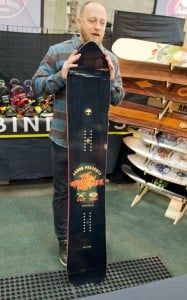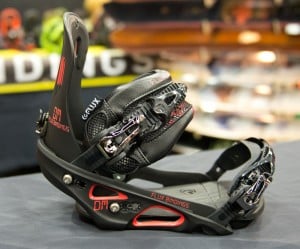2017 Rome Targa Debute!
- Jan 12, 2016
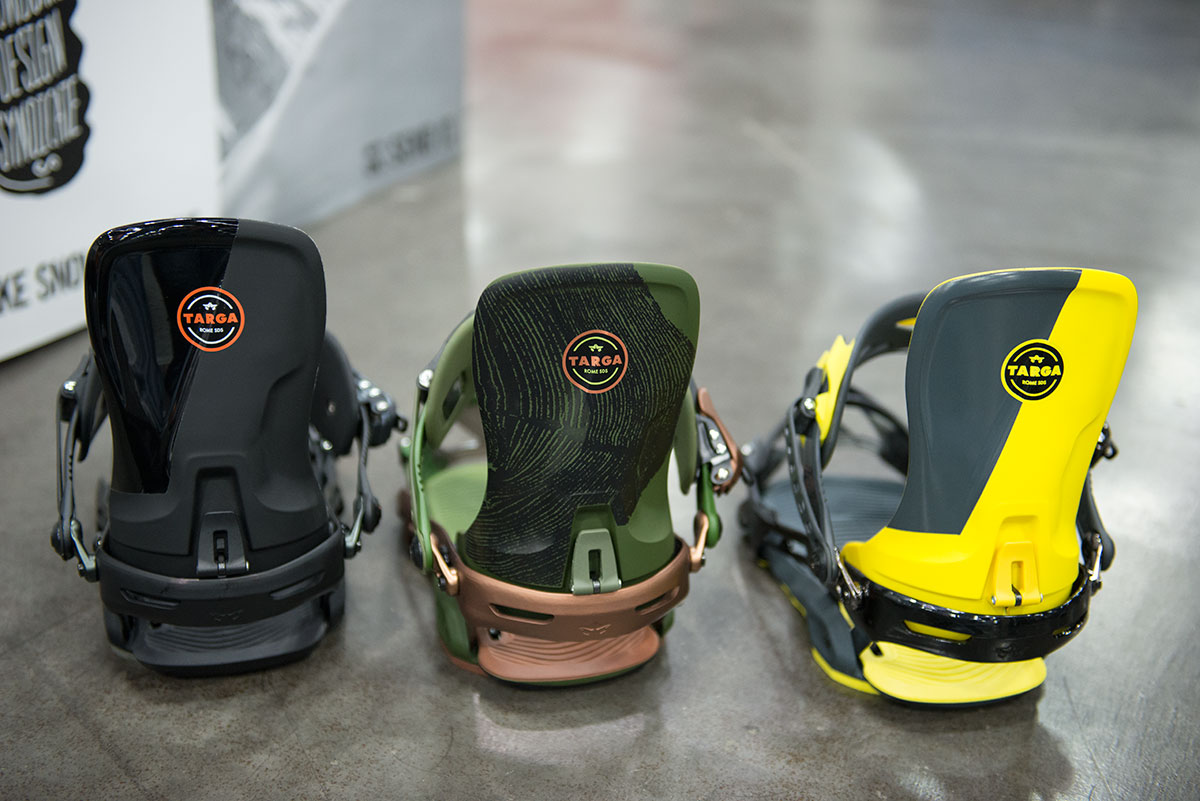
The 2017 Rome Targa binding debuted at the WWSRA show in Portland! New hiback, new straps, an articulating arm on the ankle strap, and oh so much lighter! 2017 is a huge step up for the Targa!

The 2017 Rome Targa binding debuted at the WWSRA show in Portland! New hiback, new straps, an articulating arm on the ankle strap, and oh so much lighter! 2017 is a huge step up for the Targa!
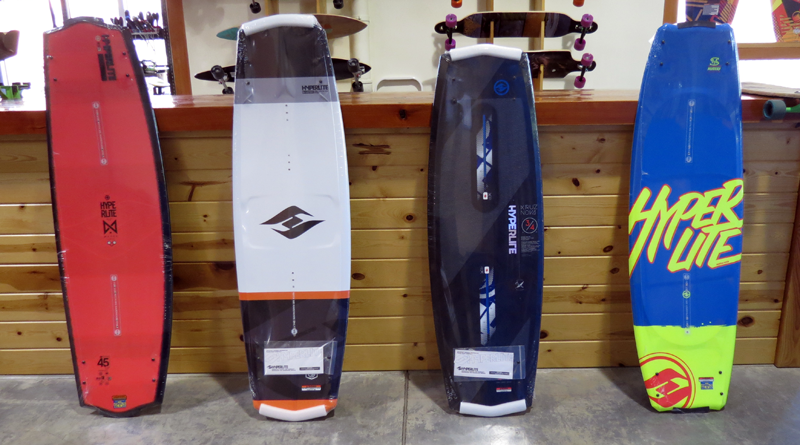
2015 Hyperlite wakeboards have arrived! Pictured from right to left are the Marek Bio, Vapor, Kruz and Murray Bio. Despite being one of the best looking lines Hyperlite Wakeboards have ever produced these are set up to be the best performing boards as well! From cable parks to open lakes, Hyperlite's 2015 line has a wakeboard for everyone!
Smith continues to push great looking goggles on their frame-less io platform. Get a preview of the newest Smith goggle, the IO7 right here on the Wiredsport innovation watch!
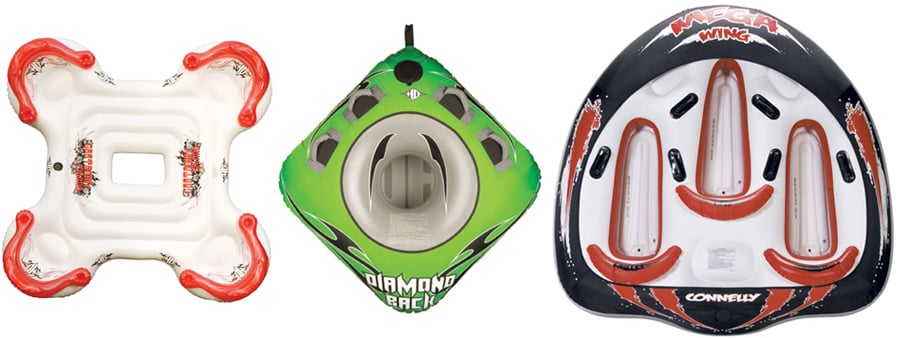
It's getting into summer which means boating season. We are debuting our new lines of Connely and HO tubes for your summer sun enjoyment to celebrate. Tubing is the perfect all family water activity, enjoyable by people of all ages. Want a casual float tube or are you looking for an adrenalin pumping ride being towed behind a boat? Either way our line of tubes has you covered. Try being out on the water, in the sun, being pulled around by a boat and not having a smile on your face. Whether you're 6 or 60, it's impossible.

Grayne has long been protecting snowboarders and skiiers wallets with insanely low pricing on their top of the line snowboard and ski accessories. Well they are now ready to protect your head as well! With a mid season release Grayne now offers the MTN Ski and Snowboard Helmet! Featuring dual safety certifications, the EPS foam and revolutionary shell design provide maximum protection from even the hardest falls!
The MTN Snowboard Helmet is no bare bones head protection though, this thing is loaded with tech! Adjustable slide venting lets your head breath on warm sunny days but keeps you dry and warm in the coldest conditions. The audio ready liner and earflaps easily accomodate most any headphones or audio chips for all your tunage needs! Grayne's Twist-to-Fit Dial system in the back of the helmet makes finding the perfect fit a breeze. The MTN simply has everything you could ask for in a helmet, including a sub $50 starting price!
Let's put this right out there. The two most common complaints about Snowboard and Ski goggles are fogging and scratching. While it is not possible to entirely eliminate either it is hugely beneficial to understand the factors and the technologies that are in place to fight each, how those technologies interact with design, and how your usage can maximize the effectiveness of both.
Goggle Fogging, Anti-fog, Condensation, Airflow - The Battle
To best understand anti-fog and airflow design it is worthwhile to consider fog. We call it fog but it is really condensation that is most vexing in the instance of snowboard and ski goggles. Fog refers to water droplets that are suspended in air. Goggle condensation forms when warm, moist air comes in contact with a cooler lens surface. The lens cools the air and water droplets form on the lens surface(s).
So, in terms of snowboard and ski goggles, how does the warm moist air get introduced to form these droplets?
1. Breath. No suggestion here that you stop breathing. It is, however, important to know that balaclavas, gaiters and facemasks all can direct breath upwards into your lower goggle venting. Breath moisture alone is typically easily dispersed by good goggle design elements, but it can become an issue when other fogging elements are also at work. More on compound effects below.
2. Sweat. It ain't pleasant to consider, but faces and heads sweat...and some sweat a lot more than others. The facial foam (even the excellent, less absorptive foams that are currently in use) will trap some of this moisture right where it is wanted the least (surrounding the free-air inner lens chamber).
3. Helmet, Beanie, and Hat Moisture. Let's keep this category separate from Snow, Rain and Ice because this one is avoidable. Put your dry goggles up on your wet helmet, beanie or hat and you have just given your facial foam a good soaking. When returned to your face the water you have introduced warms and vaporizes...you know the rest - the potential for lens condensation.
4. Snow, Rain and Ice. We can't change the elements we ride in. These factors all introduce moisture, some of which will enter your goggle system. While there is no avoiding the weather, it is worth considering on those days when extra moisture is going to be an issue.
Anti-Fog films, coatings and treatments all essentially work in the same manner. They are designed to reduce the surface tension that allows condensation to form.
It would be terrific if "Anti-Fog" could hold back all condensation that you will encounter. It cannot. This does not refer to one anti-fog vs. another. This is true of all of them. In fact, of the three common weapons that goggles have to fight condensation (peripheral venting, through-lens venting, and anti-fog films, coatings and treatments) anti-fog is by far the least potent. Also worthy to consider, as an increasing amount of warm, moist air is introduced the less effective the anti-fog becomes. At a certain point it simply becomes overwhelmed and cannot perform its function. So, while anti-fog alone may be adequate to hold back condensation introduced by breath directed upwards by a
balaclava, it may later fail if newly soaked facial foam is added to the mix.
Airflow. It is your friend and is by far the most effective means of keeping goggles free of condensation. While this will vary by design, Airflow should be considered 90% of your "fog" reduction scenario with anti-fog being a mere 10%. Well designed goggles allow external air to flow through peripheral vents (and in many cases lens vents) to exhaust the moist air that has formed and and to reduce condensation that may already be in place. The more air that is circulating freely through the system, the less of a condensation issue you will have. Is this a good argument for selecting the largest goggles that will fit your face? In most instances, peripheral venting (the largest and most important venting structures) do increase proportionally with goggle size, and yes - that is great. But, A very common pitfall is to select a huge goggle, pair it with a helmet that fits too snugly to the goggle and block much of the valuable venting that you have gained. Add in a Balaclava and some wet facial foam and you will have an unpleasant day coming your way.
This brings us to compound issues. No goggle is fog proof. Any system can be overwhelmed if too much moisture / moist air is introduced without adequate venting. It should be understood that not all factors are equal. Breath for instance is relatively easy to combat, while wet facial foam is much more difficult. Combine both and your goggle will struggle. Block the venting as well and it will fail.
Goggle Depth. This is the distance between the face and the outer lens. It is important because deeper goggles will almost always increase venting and will often position a portion of the venting where it will protrude far enough outward to allow clearance over helmets and face gear. This can allow the use of a larger goggle at a size that might otherwise block venting. The downsides of such deep designs are increased noise, and a greater susceptibility to scratching and damage as the goggle becomes more of the "point of first contact".
No one goggle is correct for every rider. What remains fog free for one user may create issues for another. The specifics of your face shape and dimensions, other accessory gear, and usage preferences will all impact how well any specific design will work for you.
Scratching, Anti-Scratch, Films, Coatings and Treatments - NASA SHMASA
Snowboard and ski lenses are made of plastic. The plastics used are technically very impressive, but they remain plastic. These plastics are (relatively) very soft materials and on their own can be very easily scratched. To minimize this highly aggravating trait the goggle industry has utilized anti-scratch technologies that are largely derivative of designs that were initially developed by NASA to reduce scratching on their helmet visors (hey, they also did the early work on anti-fog for the same helmets).
NASA? That sounds awesome! These things must be scratch proof. Uhhmmmmm. Let's go back to plastic is very soft. Regardless of what it is coated with, goggle lenses are very easily scratched. Not some of them. All of them. Whew! Glad to have that out there. The newest multi-layer films and coatings are far better than untreated plastics and will serve to protect your lenses somewhat. They can also help to reduce that appearance of some small scratches that might form. That said, your goggles are not definitively scratch proof. To the contrary, anything harder than the lens itself will scratch them if sufficient contact is made. Even mildly abrasive surfaces such as common paper towels will degrade goggle lenses.
That said, many riders can use a current lens for 3-5 years with exceptional clarity but it does take some planning and care. A microfiber bag (once the lens is dry) in a contact free area is the best practice for transport and storage. Cleaning with light pressure and no solvents using a microfiber cloth is advised.
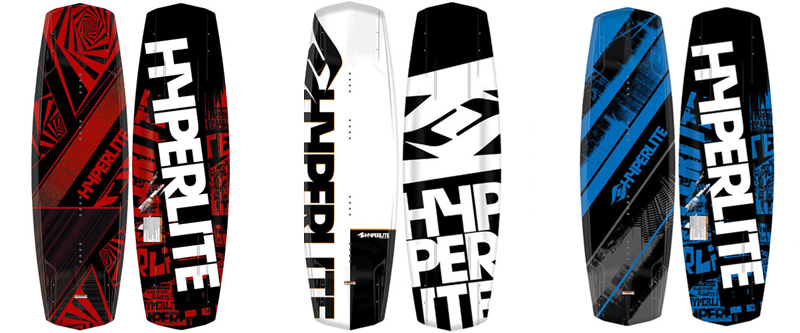
The days are getting longer, weather sunnier and the water’s warming up. That means it’s wakeboard season. And to celebrate the final summer according to the Myans, we used our strategic partnership with Hyperlite to create some boards specifically for Wiredsport. We worked with Hyperlite day and night for months and poured all we had into these boards. Finally, after some final touches and inspired by the pro line from Shaun Murray and Rusty Malinoski’s “Marek” pro line, the Hyperlite Machete, Agent and Destroyer were born.

Wiredsport is proud to debut one of the best deals in the snowboard and ski goggle market! Grayne Goggles are high performance goggles designed for performance, comfort and style. Every Grayne lens features 5x Military grade Anti-fog and Anti-scratch coatings. A cylindrical lens to bend light more naturally to your eye and full venting on every frame mean you'll stay fog free in most any conditions. And when they start at just $49.95 you'd think that's where it ends, but you'd think wrong! Grayne also includes a free bonus yellow lens and microfiber bag with every order. With 4 frames to choose from, a polarized lens option as well as their Pyro and Goldrush lenses, Grayne has a goggle and lens combination to fit every rider's needs. Simply put, we cannot suggest any goggle more than the new line from Grayne!
Interested in a pair? You can check out their full line here
Ever wonder how Mervin cranks out such epic Gnu and Roxy boards? Mervin's Jeff Kempf walks us through the whole process in this video tour of the Mervin Manufacturing HQ in Sequim, WA.
Mervin Mfg. Factory Tour from Mervin Mfg. on Vimeo.
We recently had a chance to feast our eyes on some new gear that will be hitting stores for the 2014/2015 season. We're loving the Gnu Billy Goat and Arbor Shreddy Krueger graphics as well as the fresh Flux Bindings look. What are you most excited about for next season?

